TRADE AXE & TOMAHAWK COLLECTORS ASSOCIATION.  | home
| home
ABOUT T.A.T.C.A. | FORUM | MY humble COLLECTION | MEMBER'S AXES | PAGE ONE | PAGE TWO | PAGE THREE | PAGE FOUR | PAGE FIVE | PAGE SIX | PAGE SEVEN | PAGE EIGHT | PAGE NINE | PAGE TEN | PAGE ELEVEN | PAGE TWELVE | FAMOUS TOMAHAWKS | COWAN'S | EBAY RAMBLINGS | MORE EBAY STUFF | The MYSTERY PAGE | LINKS | BUY- SELL | WHAT IS A TOMAHAWK? | SUGGESTED READING | FOUND | FOREIGN AXES | BOARDING AXES | THANK YOU FOR JOINING T.A.T.C.A | WHO USED "TOMAHAWKS"? | OPINION / REVIEW BOARD | MIMICS AND other WEIRD AXE | ARTIFAKES & GALLERY OF REPROS | YOU BE THE JUDGE. | MODERN BLACKSMITH AND OTHER TOMAHAWK ART
MIMICS AND other WEIRD AXE
Another factor in the mix is the fraternal axes some of which are said to date back to the 1700s, the period of the original tomahawk form. Other "Bullsnot Tomnohacks" include ice axes from the days of ice houses.These were made by a couple of companies one of which "Underhill" made several different designs. The one unifying characteristic that almost all of these ice axes share is a rounded duckbill blade edge. This can get somewhat confusing as some earlier axes have gently rounded blades but are still distinct from the hard core ice axes by having slight corners to the blade edge. To add to this clusterthuck is the little known fact that "Underhill" also produced and marketed a spike tomahawk as such as late as 1858. I haveseen this design listed in tool identification guides as an ice hatchet. However this is not the original use intended as far as the underhill catalog was concerned as they were listed as their "Tomahawk" design. Then if that were not bad enough, throw in a bunch of 50 to 100 year old third world axes from Africa, the middle east etc. and you will find your work cut out for you separating the artifacts from the artifakes . Oh and last, but far from least is the modern blacksmith using old period metal like shingling hatchets and snow hammers to knock out fake tomahawks. This is a crying shame as the altered tool loses all value as a period item. And some poor sucker is going to end up spending their hard earned bucks on this piece-O-junk instead of paying their phone bill and it got turned off after there car broke down and??? Uh wait ,,, well that has not happened to me as far as you know but I have heard of such things happening? Ur something like that. Another aspect is just downright weird axes that were genuine battle axes in such places as Afghanistan and Africa and are likable in their own way and I've owned one or two and liked them . However I do take issue with them when they are auctioned with a claim of an American heritage. Other foreign battle axes are also interesting when offered in the proper context.
AXES for
Fire and Ice
Ice axes
During the early to mid 1800s in Canada, and in cooler parts of the US
people began to exploit the one commodity of which they certainly had
no shortage of,,ice. The harvesting of ice to be shipped to warmer climes
was big business before the advent of refrigeration and these were the
tools used to knock out the large blocks required to reduce the loss to
melting on the trip south. These axes have heads that are typically
over 12 inches long, heavy with a canted spike and most with a
long rounded duckbill blade. Keep in mind that all of these
features can be found on some legit spike axes but if you find an axe
that has all three of these characteristics, you are probably looking at an
ice axe. Also two company logos appear on allot of these axes. Underhill
and Gifford-Wood edged tool co. However be aware that Underhill
also produced a legit spike tomahawk where it appears in their 1858
catalog listed as their "Tomahawk" pattern.
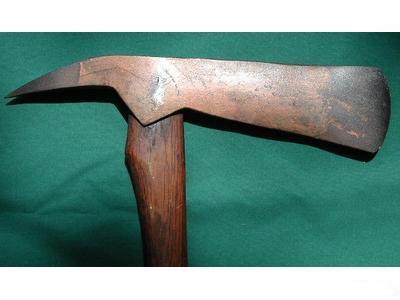
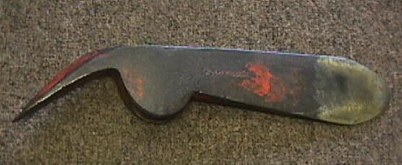
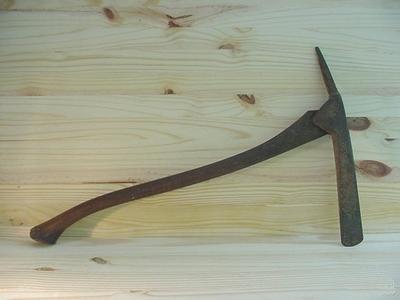
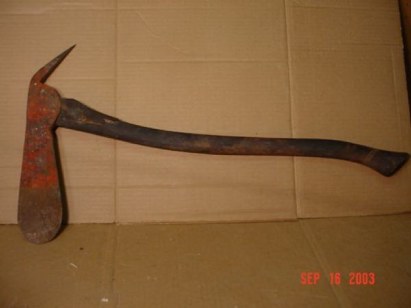
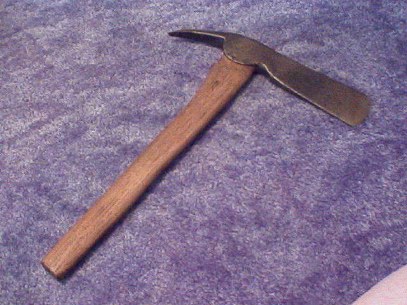
I have done my best through no small amount of research to clearly
distinguish between true tomahawks and the other fire/ice axes/tools and
imitators that fill the listings on ebay etc. That is to say that I have been open to
all ideas and suggestions and have learned a lot from many helpful
people. I have removed many things from my collection when it was
questionable or just in the gray area. However after more research,
on the following subject
I draw the line.
ICE HATCHETS ?
The politics of producing & marketing tomahawks
in the latter half of the 19th century
To those who study the history of the tomahawk as a weapon, an interesting
thing occurs in the catalogs of the various edged tool makers around the
1860s. Denial. That is to say the words "tomahawk or trade axe" suddenly
become nonexistent. Why you might ask? One reason has to do with the
development of multi shot firearms and the reduced roll of hand to hand combat.
However,
another often overlooked, more likely explanation is for the same reason that a clothing
wholesaler in 1940s pearl harbor would be hesitant to hand a shop owner a catalog with
"Japanese kimonos" in it. While this may sound like an oversimplification of the
situation, one has to keep in mind that however justified native Americans were in
their attempts to reclaim lost lands, they were perceived as a serious and personal threat
to the settlers now encroaching on the western frontier Few icons were associated with
that threat like the tomahawk. In 1862 Eastern newspapers blared headlines complete
with gory drawings of the killing of 400 settlers in Minnesota by Little Crow's Santee
Sioux. In the 1858 Underhill edged tool catalog their classic short spike axe is shown
as their "tomahawk pattern" As far as I can tell this is the last time the word appears
in any edged tool catalog . Because Underhill made both some antique tool
collectors guides like Slones mistakenly show this pattern as "ice hatchets"
It is not for certain that this was an attempt to camouflage the real expected
purpose and or consumers of the axes or if it were a genuine attempt to find a new
market for a pre-exsisting product. Considering the substanciel historical and photo
image record of the continued use of factory made cast steel spike tomahawks by
many western tribes after the mid 1800s , we tend to lean heavily toward the former
In the present day, when general antique tool collectors come across genuine spike
tomahawks many sort of "knowingly" laugh up theirs sleeves and mutter.
"Ice hatchets" , not taking into account the possibilty that they are still being
deceived by what was for the times a politically correct marketing ploy.
Make your own mind up about what is the correct explanation but do not
forget that there was a time and place when "Selling arms to tha Indians" was pretty
much thought of a serious form of treason by many western "Euro-Americans"
and was considered grounds for hanging.
The below blurb from a Wm T. Wood catalog almost sounds almost desperate to
find new market for their small spike axe pattern, or at least a perceived one. Written
accounts by some of the old timers who had experience in the ice houses say that
while the standard 12 inch ice axes used to harvest the ice were common, saws and special
chisels were far more accurate and almost used exclusively to reduce the waste associated with
the breaking down of larger blocks. Another serious case for the true market/intent of these
small "tomahawk" looking spike axes is the fact that they disappear on about the
same time line as the likely consumers became subdued on reservations.
In other words, while after the turn of the century tool catalogs continued to show the
round bladed full size ice axes and ice houses were still the order of the day, the alledged
"ice hatchets" were nowhere to be seen.
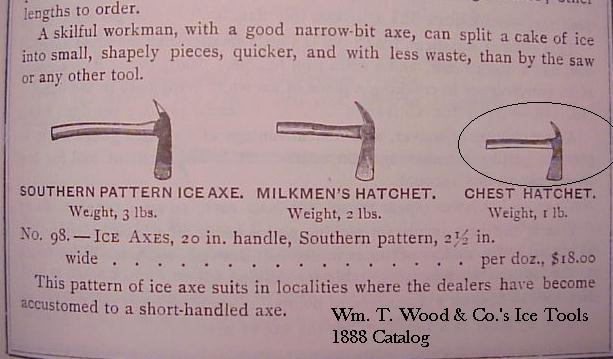
By the way, what and tha heck does a milkman do with a spike axe?
A couple of rare legit "ice hatchets"
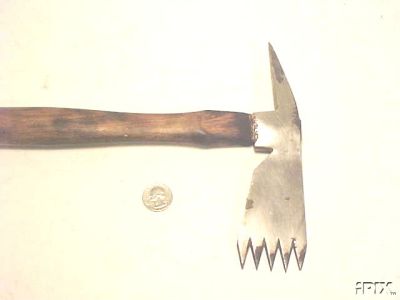
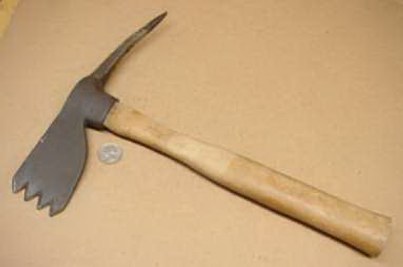
To be fair I'l admit that on occasion these have appeared to
have been miss-identified as spike tomahawks and perhaps
the one above even in Peterson's book # 80
Fire axes
When I first decided to focus on collecting spike axes I attempted to ferret out as many
spike axe "mimics" as possible and that road eventually led to checking out all the firefighter
history museum web sites. Therein I stumbled across both old photos and drawings
at least three forms of early fire axes that I am aware are commonly misidentified as spike
tomahawks or boarding axes. Of these early fire axes the LaFrance style is easiest to spot ,
La France is a company that produced fire fighting trucks and equipment including
fire hose nozzles etc however like the bottom one of these three, LaFrance axes
still appear on ebay now and then listed as "spike tomahawk"

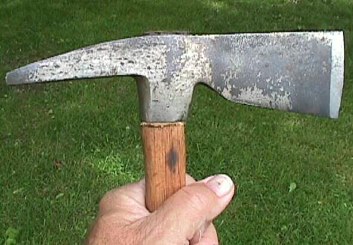
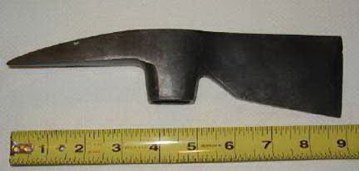
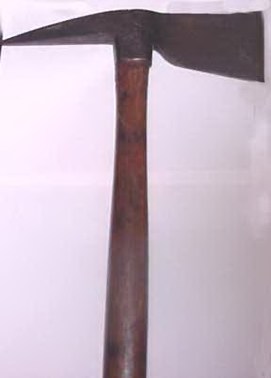
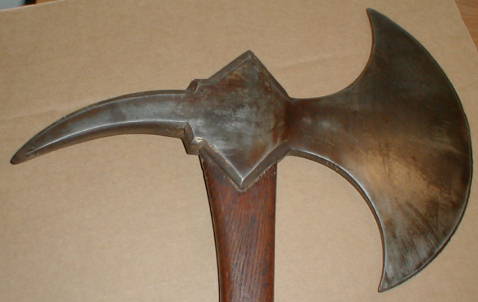

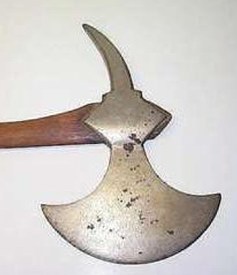
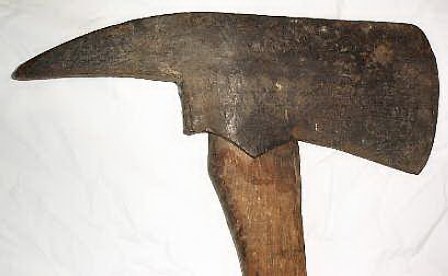
At 14 inches this is much too heavy to be a effective weapon.
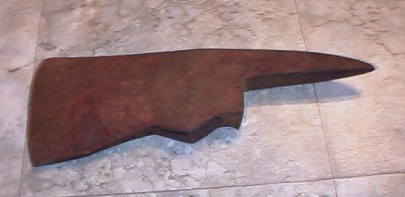
Euro fire axe?
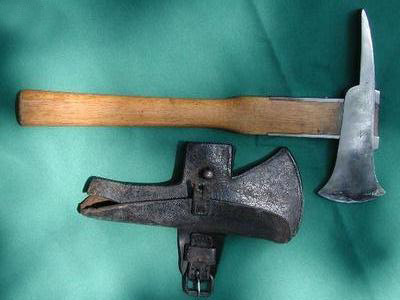
English boy scout hatchet
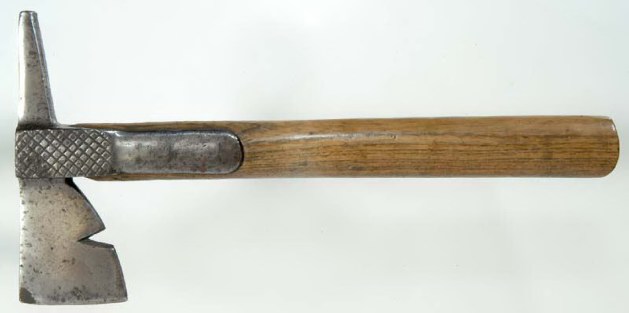
Brit fire axes looks like boarding axes and can be hard
to tell apart. Don't be fooled
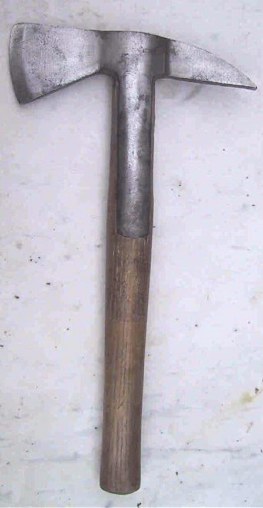
However, this one might be a legit boarding axe?
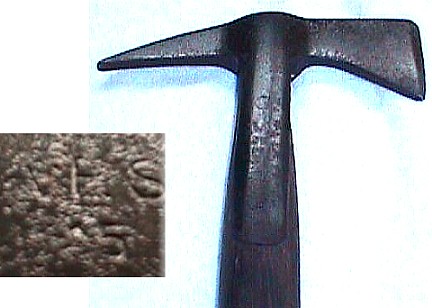
The one below is a famous mimic and one is even in Russell's book,
However to their credit, they concide that something is not right for
a 1800th century halbard head and correctly conclude that it is much more
recent. This is one of the few intact ones to ever appear on ebay.
It is a plug cutter for Battle ax tobacco made toward the end of the 1900th century.
You might ask how something that looks like this could ever be mistaken
for a early 1800th century piece? Break the head off. bury it for 50-100 years
and watch um show up on ebay for several hundred dollars!
Look below.
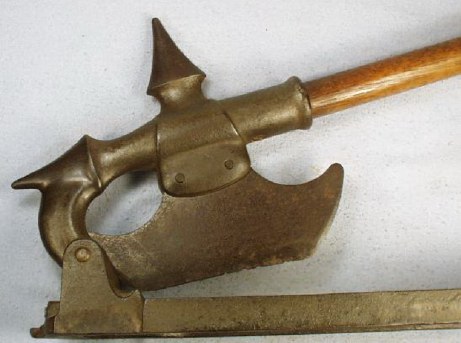
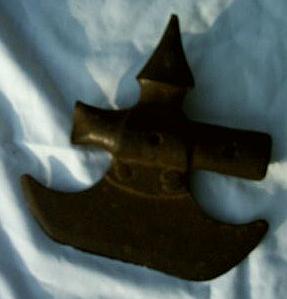
The one above was on ebay recently with a $999 opening bid. When I informed the seller about the true nature of this piece this is what he replied:
"i had a historin look at the halberd head this is he informed me it was"
Oh well. ha ha
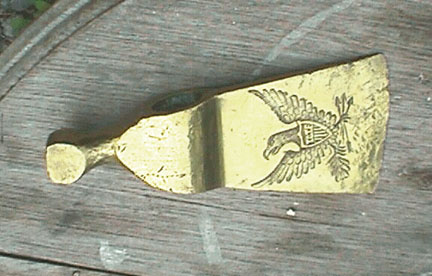
Fraternal T.O.T.E axe. A few of these actually date back
to the late 1700s as they are the fraternal regallia of the secret
"Order of improved red men" However the vast majority of
them date to right around 1890-1920. The most convincing
explanation of what T.O.T.E. stands for I've heard so far
is "Treaty of the eagle" but if I told you that then I'd
have to kill you. yuk yuk
Fokos
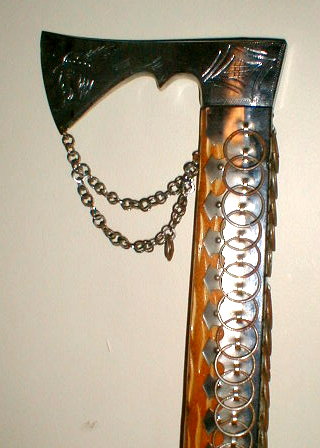
This is a fokos or Polish Ciupaga Walking Stick
In days of yore, the highlanders of the
Carpathia Mountains carried Ciupaga
(pronounced "chew-pa-ga") walking sticks.
"I once saw one of these babies go on ebay
for over $450 as a native american presentation
tomahawk. I later got one for $38"
Lumber marking axes
These things look like hammer poll axes and if the initials on the face
of the hammer have been pounded off they can be hard to spot.
Main thing is most have double flaired blade which should make
one wary anyway.
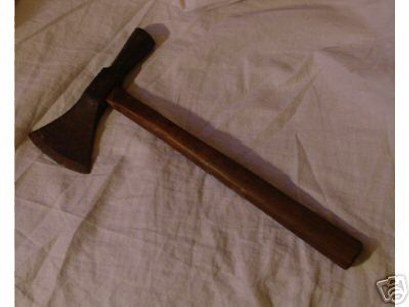
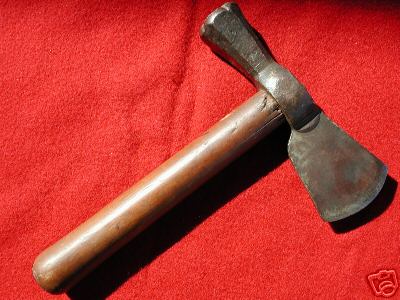
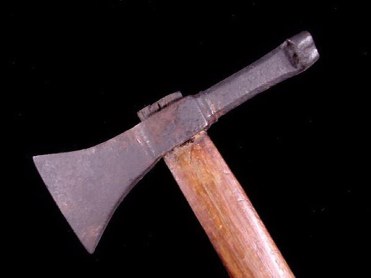
And then there is the pride thing,
One time my daughter and I were standing by the Pecos river and we found some
black pottery shards, and I explained to her how each tribe had their own style
of pottery and that this was the famous black Santa Clara pueblo pottery made 600
years ago, Just about that time a car came down the dirt road, and stopped, guys
got out with shotguns. I was not looking at them but heard one of them say,
"Pull" Then my daughter said dad look! They're shooting Indian pottery! Suddenly I
realized I had handfuls of shattered clay pigeons. I think I felt so much like a
fool, I was very tempted to say, yes sweety those men belong to the tribe, and once a
year they have this ceremony where break all the pottery in the household, like they
must have done here for a thousand years. Ha Ha
Top

